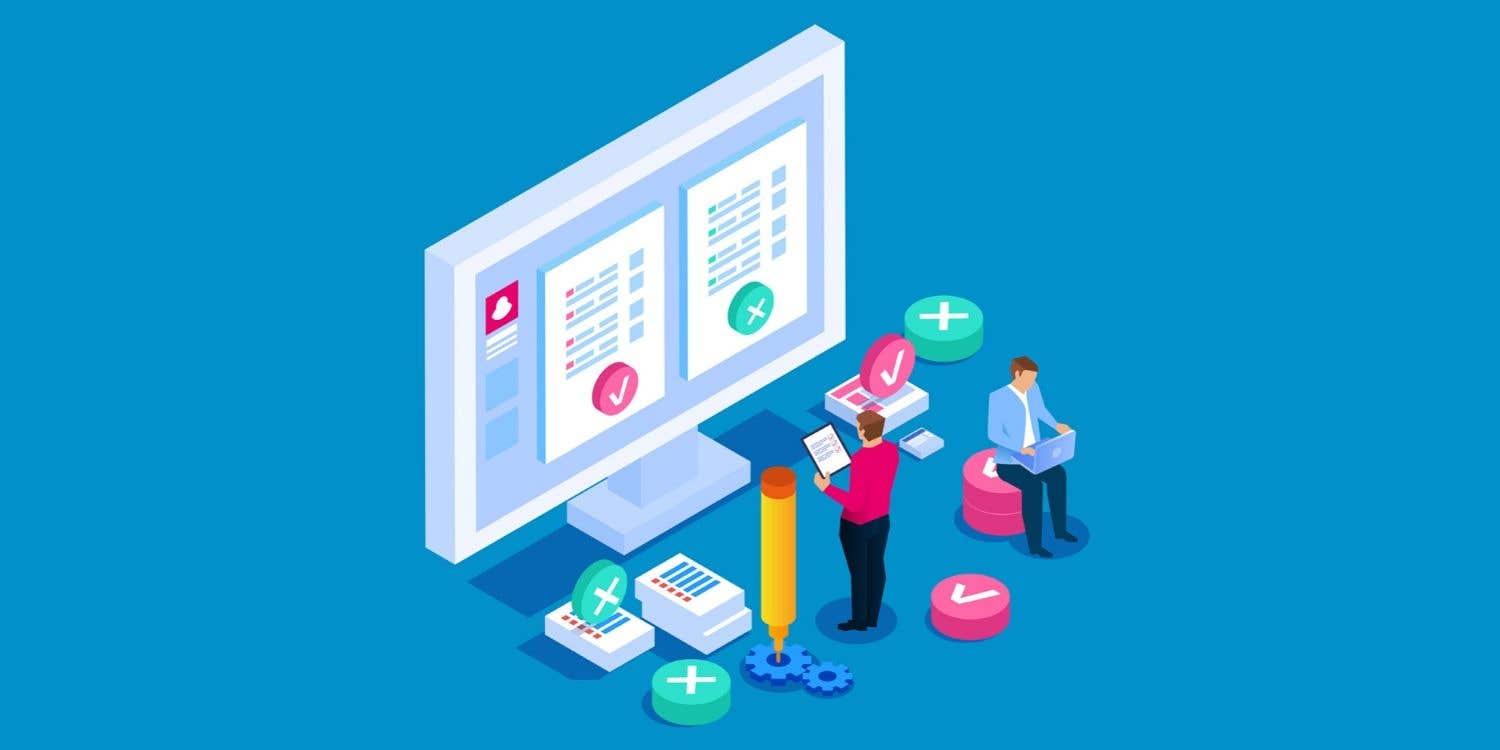Chatea con Ava - Tu consultor de negocios IA
¡Hola, soy Ava, tu guía de IA para potenciar tu negocio!
Ya sea que dirijas una empresa o sueñes con iniciar una, estoy aquí para hacer realidad tu visión gracias a los freelancers que usan IA. Comparte los objetivos de tu negocio y juntos crearemos un proyecto en los que nuestros talentosos freelancers puedan ofertar. ¡Hagamos realidad tu visión!
Tengo un negocio
Estoy comenzando un negocio
Algo salió mal al enviar la conversación a tu correo electrónico. Por favor, intenta de nuevo más tarde.
Solo puedes guardar tu conversación una vez por hora. Por favor, intenta de nuevo más tarde.
Tu conversación es demasiado corta. Sigue chateando con Ava para poder guardar.
How to install and use WordPress plugins
Plugins are one of the most essential elements of WordPress. These tools can add amazing features and custom functions to your website
17 feb 2020 • Lectura de 6 minutos

Content Marketing Specialist
Falló el copiado al portapapeles. Intenta de nuevo después de ajustar tus permisos.
Copiado al portapapeles.

Plugins open up a world of functionality for your WordPress website
When you’re just getting into WordPress, you may wonder what a WordPress plugin is and how to use it.
Well, plugins are one of the most essential elements of WordPress. These tools add more functions to your blog and allow you to make any sites you want without much hassle.
It can be used to tweak some default settings, accelerate your site’s performance, and add cool new features to your website, like a shopping cart, spam comment filter, and many more. The possibilities are endless!
What’s more, installing and using one is easy as well. Most plugins have an intuitive interface and offer complete documentation, so you don’t need to have any technical background.
So sit tight, relax, and I’ll tell you all the necessary steps you need to know to use a WordPress plugin.
How to install WordPress plugins
As alluded earlier, installing plugins on WordPress is not a complicated process at all. Though, there are several ways to go about it: using WordPress dashboard, a File Transfer Protocol client, or the File Manager of your hosting account.
I’ll take you through the methods one by one.
Installing plugins from the WordPress Dashboard
Installing plugins directly from the WordPress dashboard is arguably the easiest method available. As of right now, the official plugin directory has more than 50,000 free plugins designed for various purposes.
That being said, just remember not to go overboard since having too many plugins may slow down your website and potentially increase the bounce rate .
To install plugins from the official directory, you need to:
Enter the name of the plugin into the search bar, and click Install Now. As an example, I searched for Yoast , one of the best SEO plugins for WordPress.
Once the installation is complete, Activate the plugin, and you’re done! Now you can configure and use the plugin.
Keep in mind that the tutorial above only works for plugins that are available on the official directory. If you happen to purchase a premium plugin from third-party sources, you must upload it manually:
Download the zip file of the plugin you wish to upload.
Login to WordPress and go to Plugins > Add New.
At the upper left of the page, locate the Upload Plugin button.
Select the downloaded file and click Install Now.
After that, you just need to Activate the plugin, and you’re all set!
Installing WordPress plugins manually via FTP Client
In some cases, you might be limited from installing plugins via the WordPress admin area. But don’t worry — you can use an FTP client like FileZilla .
Many web owners prefer to use FileZilla as their transfer method because it has no upload limitations. What’s more, thanks to its user-friendly interface, you’ll have no problem using this client.
Here’s what you need to do to install WordPress plugins from FileZilla:
Download the zip file of the plugin and extract the content to your computer.
Connect to your hosting account using FileZilla. Hosting providers have different policies when it comes to FTP access, so ask your hosting provider for assistance.
In the Remote Site panel, head over to public_html > wp-content > plugins.
Navigate to the Local Site panel and browse for the plugin files that we extracted earlier. Select all files, right-click on them, and choose Upload.
Once it’s finished, log in to the WordPress dashboard and open the Installed Plugins menu. You need to activate the plugin from there.
Installing WordPress plugins manually via File Manager
If you don’t really want to use an FTP client, use your hosting File Manager to install WordPress plugins:
Download the plugin zip file.
Login to your hosting account’s control panel and locate File Manager.
Once you’re in your site’s root directory, head over to wp-content > plugins.
Upload the file you’ve downloaded to the plugins folder.
Select the uploaded file and use the Extract feature to create a new plugin folder.
And you’re done! Now login to your WordPress account and activate the plugin.
Configuring WordPress plugins
After you’ve installed enough plugins, you’ll notice some plugins require more configurations than the others. However, as each plugin has different settings, they won’t be described in detail here.
If you need to find the plugin’s settings on WordPress, simply go to Plugins > Installed Plugins. Then, head to the plugin you need to configure and click the Settings option under the plugin name.
In some cases, the plugin settings are under the Settings or Tools menu, so watch out for that too!
How to update WordPress plugins
Keeping your plugins updated is one of the best security measures you can take for your website, as faulty plugin files can cause many problems.
In most cases, you can easily update your plugins through the Updates feature on your WordPress dashboard.
However, if for some reason the updates fail, you might have to update the plugins manually through an FTP client or WP-CLI.
Since I’ve covered how to use an FTP client earlier in the article, follow these instructions to update your plugins via WP-CLI:
Connect to your server via an SSH client — you can check out this article for guidance. Here I’m using PuTTY as an example.
Once you’re connected, run the following command: wp plugin update plugin-slug Don’t forget to change the “plugin-slug” to the official slug of the plugin (the last part of the URL). For instance, since the URL to the Yoast plugin is https://wordpress.org/plugins/wordpress-seo/, the slug would be wordpress-seo.
And that’s it! The SSH client will look for an update and execute it automatically if there’s any.
How to deactivate WordPress plugins
Deactivating plugins from WordPress dashboard is quite easy. You just need to go to Installed Plugins and click Deactivate on the plugin you wish to disable.
If you need to disable all of your plugins at the same time, simply connect to an FTP client and rename the plugins directory to plugins_disabled.
I suggest deactivating a plugin if you wish to turn off the feature temporarily. Meanwhile, if you don’t want to use the plugin anymore, it’s better to delete it altogether. Having too many installed plugins can clutter up your site.
Must-have WordPress plugins
Now that I’ve covered how to install, update, configure, and deactivate plugins on WordPress, it’s time to present you with the must-have plugins for your website:
Yoast SEO
When it comes to search engine optimization, Yoast SEO is arguably the best plugin to date. The plugin comes with a focus keyword optimization, snippet preview, and readability checks that will help your content to rank better.
What’s more, it’s very easy to use, too! Everything is laid out in a way where even complete beginners can use it. You can download the free version , or purchase its premium version that comes with other great functions like internal linking suggestions, social previews, and more.
Akismet Anti-Spam
If you need a plugin to filter spam comments, this plugin is for you. The tool will review every comment on your site and flags down the spams. What’s more, Akismet provides a status history for each comment to see which ones were identified as spam.
The good news is, Akismet can be used for free! If you want to use this plugin for your ecommerce site, you can purchase its premium version for $5 a month.
WordFence Security
No one wants to get hacked and lose their websites. For that reason, I highly recommend WordFence Security. You’ll be protected with its firewall protection, malware scan, login security, live traffic monitoring, and much more.
Wrapping up
WordPress plugins can turn an ordinary WordPress site into a powerhouse that brings in traffic and profit. As such, there’s really no reason not to install plugins and reap the benefits that they have to offer.
This should give you all the information you need about how to install, maintain and deactivate plugins. If you're still struggling, you can talk to a freelance web developer to get a bit of help.
Now, what are you waiting for? Install some plugins and add new cool features to your website!
Cuéntanos qué trabajo necesitas encargar
Ingresa el nombre de tu proyecto
Historias relacionadas
Habla con uno de nuestros Copilotos técnicos para que te ayude con tu proyecto
Artículos recomendados solo para ti

Wondering which platform to build your website on? Not all content management systems are created equal. We explore the pros and cons of each.
6 min read

There are a lot of details to keep in mind when you're building a website. Our guide will help you keep track of your to-do list.
1 min read

Learn the complete end-to-end process of building a successful website for your business in our comprehensive guide
19 min read

Hiring freelancers for a project can save you time and money, but it's important to understand how to get the best results
4 min read
¡Gracias! Te hemos enviado un enlace para reclamar tu crédito gratuito.
Algo salió mal al enviar tu correo electrónico. Por favor, intenta de nuevo.
Cargando visualización previa
Permiso concedido para Geolocalización.
Tu sesión de acceso ha expirado y has sido desconectado. Por favor, inica sesión nuevamente.




